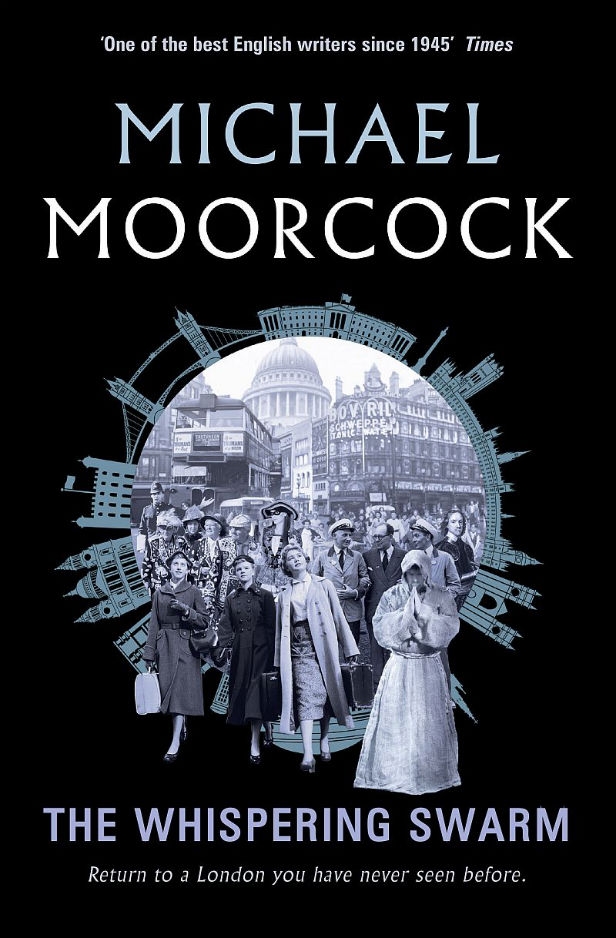Many authors find inspiration from their own lives for their novels, with writers such as Stephen King and Sylvia Plath among these ranks. Fantasy legend Michael Moorcock is the latest to join this club with the publication of The Whispering Swarm.
The first in a trilogy entitled The Sanctuary Of The White Friars, The Whispering Swarm is based in the post-World War II London that Moorcock grew up in. However, our young protagonist – also called Michael Moorcock – has the exceptional ability to travel between realities: his own normal reality, and an alternative reality where historical and literary figures mingle.
After a chance meeting at the printers with Friar Isadore, Michael is led to the Sanctuary (known as Alsacia), where he stumbles into a timeless void where bandits, lawbreakers and characters congregate together. The book follows Michael as he attempts to balance his normal life alongside his family and career – alongside his supernatural one, where he harbours a secret lover named Moll.
It’s a wonderfully written novel, with plenty of meat to the bones. No stone is left unturned as Moorcock delves into the depths of the plot, providing a descriptive and ultimately substantial story. Characters are explored thoroughly, and there’s a kind of humour that slips through, particularly when Michael first discovers Alsacia.
The autobiographical sections are charming too – Moorcock’s representations of London on the page really hype up the city and provide an almost tangible sense of context; you can almost hear the streets bustling around you.
Moorcock also provides a unique insight into his youth and his time on Fleet Street as its youngest editor. He describes the printing process for newspapers and magazines, and it’s a rare glimpse into years gone by.
That being said, Moorcock seems to have a tendency to get a little sidetracked in the description, with the narrative falling by the wayside. As if to compensate in some way for this, Moorcock skims and leaps through other sections of the novel, making it feel a little jumpy and inconsistent.
One of the more confusing elements is deciphering exactly what’s fact and what’s fiction. While this certainly provokes thought, it actually becomes a little frustrating trying to guess what’s what.
It’s the sections that are clearly autobiographical, however, that are perhaps the strongest parts of the novel, with Moorcock’s vivid memories really coming to life on the page.
There’s no denying the literary merits of The Whispering Swarm. It’s beautifully written and wonderfully descriptive, but it’s not quite on par with his older work. It’s not exactly clear who The Whispering Swarm is aimed at, which can make it hard to follow – let alone to be truly captivated by.
Here’s to hoping that Moorcock’s next book in the series pick up the slack for this one.
